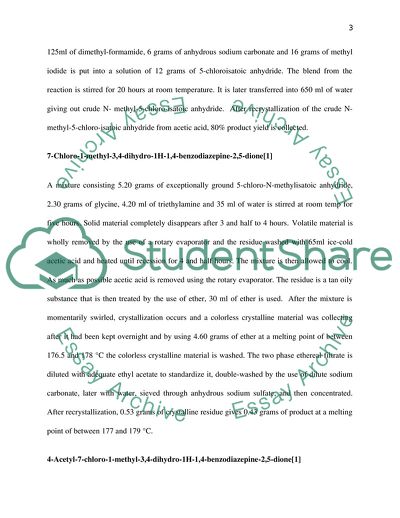Cite this document
(Synthesis of Diazepam Report Example | Topics and Well Written Essays - 2250 words, n.d.)
Synthesis of Diazepam Report Example | Topics and Well Written Essays - 2250 words. https://studentshare.org/chemistry/1812827-fine-chemical-production
Synthesis of Diazepam Report Example | Topics and Well Written Essays - 2250 words. https://studentshare.org/chemistry/1812827-fine-chemical-production
(Synthesis of Diazepam Report Example | Topics and Well Written Essays - 2250 Words)
Synthesis of Diazepam Report Example | Topics and Well Written Essays - 2250 Words. https://studentshare.org/chemistry/1812827-fine-chemical-production.
Synthesis of Diazepam Report Example | Topics and Well Written Essays - 2250 Words. https://studentshare.org/chemistry/1812827-fine-chemical-production.
“Synthesis of Diazepam Report Example | Topics and Well Written Essays - 2250 Words”. https://studentshare.org/chemistry/1812827-fine-chemical-production.


